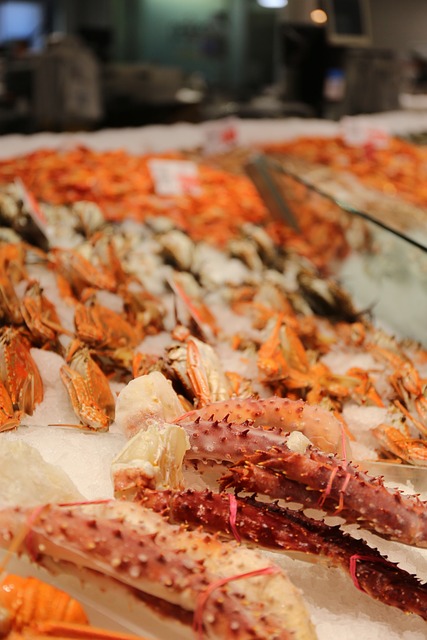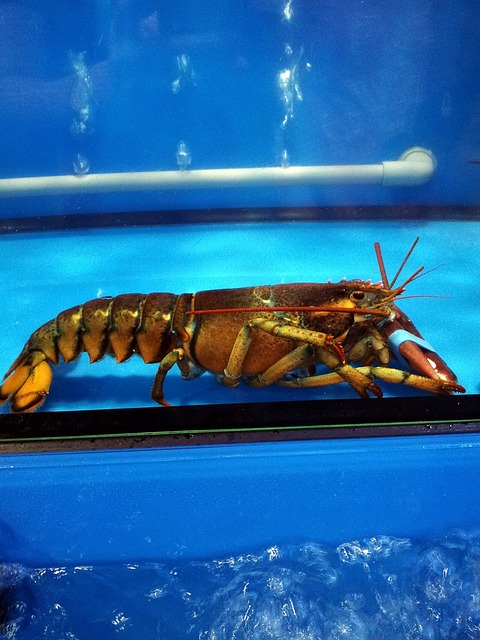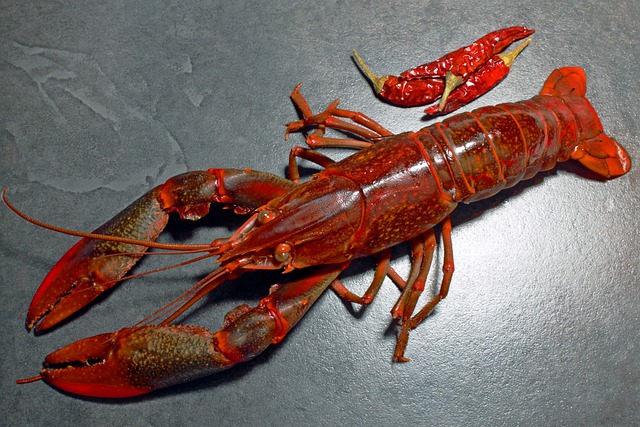Yes, you can eat raw lobster, but it’s not commonly done due to potential health risks. Lobsters can carry parasites and bacteria that may be harmful if consumed raw. Cooking lobster thoroughly helps eliminate these risks and also enhances the flavor and texture of the meat.
If you’re interested in consuming lobster in a raw or partially cooked state, it’s recommended to follow proper food safety guidelines. Some culinary practices involve dishes like lobster ceviche, where the lobster meat is marinated in citrus juices that partially “cook” the meat through a process called denaturation.
However, even in such cases, it’s important to use high-quality, fresh lobster and to prepare the dish under sanitary conditions.
What Are The Safety Concerns and Risks of Eating Raw Lobster?
Delving into the world of culinary adventure, explore the safety hazards and potential risks associated with consuming raw lobster, where flavor meets caution.
Health Risks Associated with Consuming Raw Seafood:
Bacterial Contamination: Raw seafood, including lobster, can harbor harmful bacteria such as Salmonella, Vibrio, and E. coli.
Moreover, these bacteria can cause foodborne illnesses like gastroenteritis, vomiting, diarrhea, and abdominal pain.
Additionally, proper handling, storage, and preparation are crucial to minimize the risk of bacterial contamination.
Parasitic Infections: Lobsters can potentially host parasitic organisms like nematodes and flatworms.
Furthermore, consuming these parasites in their raw state can lead to parasitic infections in humans. Freezing seafood to a certain temperature can help kill or reduce the prevalence of these parasites.
Lobster-Specific Risks:
Shellfish Toxins: Some species of lobsters can accumulate harmful toxins, such as saxitoxin and domoic acid, as a result of harmful algal blooms.
Moreover, these toxins can cause a range of symptoms, from mild gastrointestinal discomfort to severe neurological effects. Regular monitoring and strict regulations are in place to prevent the distribution of toxic lobsters.
Allergic Reactions: Lobsters, like other shellfish, are common allergens. Consuming raw lobster can trigger allergic reactions in individuals who are sensitive or allergic to shellfish proteins. Additionally, these reactions can vary in severity from mild itching and hives to life-threatening anaphylaxis.
What Are The Traditional Culinary Practices?

In various cultures, raw seafood is a significant culinary tradition. These cuisines often emphasize the freshness and natural flavors of seafood. Some notable examples include:
- Japanese Cuisine: Sushi and sashimi are central to Japanese cuisine. Sushi features vinegared rice combined with raw fish or other seafood, while sashimi consists of thinly sliced raw seafood served without rice.
- Peruvian Cuisine: Ceviche is a popular dish made from fresh raw fish or seafood that is marinated in citrus juices, such as lime or lemon, which effectively “cooks” the seafood through the acid denaturation process.
- Italian Cuisine: Carpaccio is an Italian dish that typically features thinly sliced raw meat or seafood. In the case of seafood carpaccio, thin slices of raw seafood are often dressed with olive oil, lemon juice, and herbs.
Examples of Dishes Involving Raw Seafood:
- Sushi and Sashimi: In traditional Japanese cuisine, sushi involves vinegared rice combined with raw fish, which can include various types of seafood like tuna, salmon, and shrimp.
On the other hand, Sashimi is pure raw seafood, skillfully sliced and presented, often served with soy sauce, wasabi, and pickled ginger.
- Ceviche: Ceviche is a dish originating from Latin America, particularly Peru. Raw seafood, such as fish or shellfish, is “cooked” in citrus juices, typically lime or lemon, which denatures the proteins and imparts a unique texture and flavor. Additionally, ingredients like onions, cilantro, and peppers are commonly added for flavor and color.
- Carpaccio: Carpaccio originated in Italy and is typically associated with thinly sliced raw meat.
However, seafood carpaccio has gained popularity. It involves thinly slicing raw seafood, like lobster, scallops, or fish, and serving it with a light dressing and garnishes.
What Are Lobster Anatomy and Biology?
Lobsters are crustaceans with a complex anatomy. They have a hard exoskeleton, jointed appendages, and a segmented body.
Additionally, their body consists of a cephalothorax (head and thorax combined) and an abdomen.
Moreover, they possess a pair of large claws used for capturing and manipulating food, and the tail is made up of several segments and contains meaty portions.
Explanation of Potential Edibility Based on Anatomy:
- Muscles and Texture: Lobsters have well-developed muscles in their claws, tails, and other appendages. Additionally, the meat is prized for its tender and succulent texture, making it suitable for raw consumption in specific preparations. .
Moreover, the tail meat, often referred to as “tail flipper,” is commonly enjoyed in raw dishes due to its delicate flavor and firm yet soft texture.
- Digestive System and Possible Contamination: Lobsters are scavengers and feed on a variety of organisms, which may include decaying matter.
Additionally, their digestive systems can potentially harbor bacteria or parasites, especially in the stomach and intestinal tract. This makes the digestive system a potential source of contamination if not thoroughly cleaned during preparation.
What Are The Cultural and Regional Variations?

Different cultures have varying attitudes towards consuming raw seafood, influenced by factors such as local traditions, culinary practices, and availability of seafood.
While some cultures embrace raw seafood as a delicacy, others may have reservations due to concerns about safety and health risks.
Regions Where Raw Lobster Consumption is More Common:
Raw lobster consumption is more prevalent in regions with a strong seafood culture and a history of raw seafood consumption.
For instance, coastal areas of Japan, Peru, Italy, and certain Mediterranean countries are known for their appreciation of raw seafood in various dishes.
Historical Context of Raw Lobster Consumption in Certain Cultures:
In some cultures, the consumption of raw lobster and other seafood has historical roots. For example:
- Japan: Sushi and sashimi have deep historical significance, dating back to ancient times. The preservation techniques used in Japan historically enabled safe consumption of raw seafood.
What Are The Personal Preferences and Tastes?
Individual preferences for consuming raw or cooked lobster vary widely. Some individuals enjoy the fresh, delicate flavors and textures of raw lobster. While others prefer the familiar taste of cooked lobster.
Factors Influencing Preferences:
- Texture: Raw lobster offers a unique texture that can be appreciated by those who enjoy the soft, buttery feel of uncooked seafood.On the other hand, cooked lobster often has a firmer texture that some people find more appealing.
- Flavor: Raw lobster’s flavor is often milder and more nuanced compared to the richer, sometimes smoky taste of cooked lobster. Moreover, those who prefer subtle flavors might be drawn to raw preparations.
FAQs
Which part of lobster is not edible?
The digestive tract, called the “tomalley,” is often avoided due to potential contamination.
What fish cannot be eaten raw?
Fish prone to parasites like freshwater fish and tropical species should not be eaten raw.
Can you eat lobster as sashimi?
Yes, lobster can be consumed as sashimi, particularly when handled and prepared with care.
Do Japanese people eat raw lobster?
Yes, raw lobster is enjoyed in Japanese cuisine, especially as sashimi or sushi.
Is lobster halal for Sunni?
Opinions vary, but many Sunni scholars consider lobster halal due to its classification as seafood.
Is raw lobster meat pink?
Yes, raw lobster meat can have a translucent pinkish hue, but it may vary based on the species.
What does lobster taste like?
Lobster boasts a sweet, delicate flavor with hints of oceanic brininess, varying in intensity based on cooking or preparation methods.
Conclusion
In conclusion, the exploration of the question “Can you eat raw lobster?” reveals a multifaceted landscape where culinary traditions, safety considerations, cultural attitudes, and individual preferences intersect.
Moreover, raw lobster consumption has historical roots in certain cultures, like Japan, where centuries-old practices have paved the way for modern interpretations like sushi and sashimi.
In addition, contemporary dishes such as lobster tartare and lobster crudo showcase the innovative capacities of chefs while upholding the importance of safety measures in sourcing, handling, and preparation.
Chefs’ perspectives emphasize the delicate balance between creativity and adherence to food safety standards.
Food safety regulations and guidelines, alongside monitoring and certification practices, play a pivotal role in ensuring that seafood, including lobster, is safe for raw consumption. Moreover, these measures safeguard both diners’ health and the sustainability of marine ecosystems.











